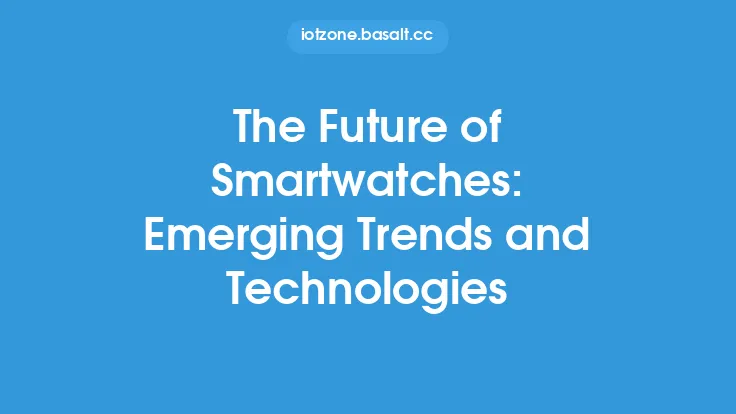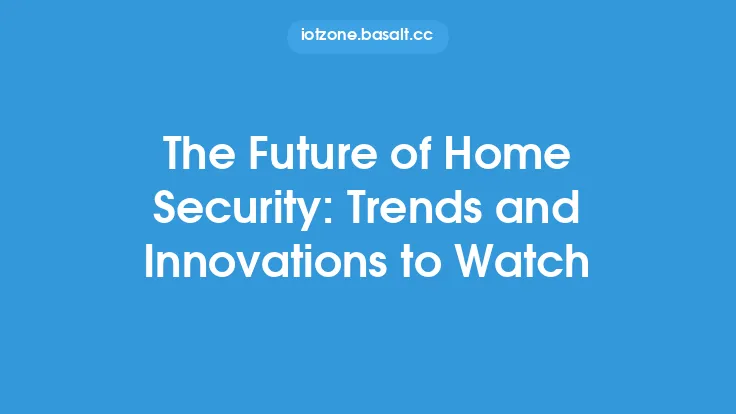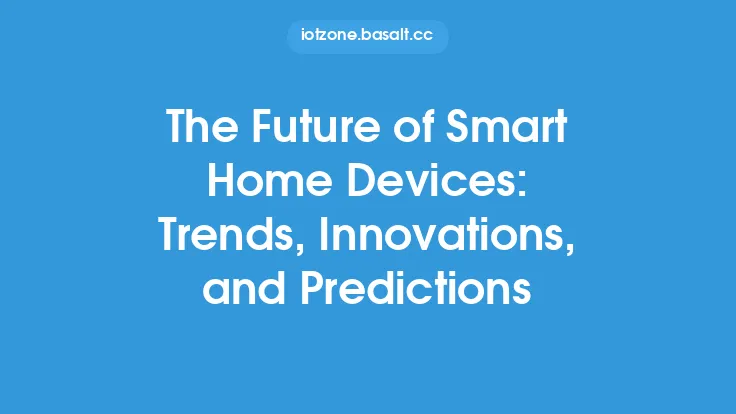The concept of smart home connectivity has undergone significant transformations over the years, driven by advancements in technology and the increasing demand for seamless automation. As the smart home market continues to grow, it's essential to explore the emerging trends and technologies that will shape the future of smart home connectivity. In this article, we'll delve into the latest developments and innovations that are redefining the way we interact with our smart home devices.
Introduction to Smart Home Connectivity
Smart home connectivity refers to the ability of devices and systems within a home to communicate with each other and the outside world. This connectivity enables various smart home devices, such as thermostats, lighting systems, security cameras, and door locks, to be controlled remotely, automated, and integrated with other devices. The foundation of smart home connectivity lies in the underlying network infrastructure, which includes protocols, standards, and technologies that facilitate communication between devices.
Emerging Trends in Smart Home Connectivity
Several emerging trends are expected to play a significant role in shaping the future of smart home connectivity. One of the most notable trends is the increasing adoption of artificial intelligence (AI) and machine learning (ML) in smart home devices. AI-powered devices can learn occupants' behavior and preferences, enabling them to make predictions and automate tasks accordingly. For instance, an AI-powered thermostat can adjust the temperature based on the occupants' schedule and preferences.
Another trend is the growing importance of voice assistants, such as Amazon Alexa and Google Assistant, in smart home connectivity. Voice assistants enable users to control their smart home devices using voice commands, making it easier to manage and automate their smart home systems. The integration of voice assistants with smart home devices is expected to become more prevalent, with many manufacturers incorporating voice assistant capabilities into their devices.
Advancements in Wireless Communication Technologies
Wireless communication technologies, such as Wi-Fi, Bluetooth, and Zigbee, play a crucial role in smart home connectivity. Recent advancements in these technologies have improved their range, reliability, and security, making them more suitable for smart home applications. For example, the latest Wi-Fi 6 standard offers improved performance, capacity, and efficiency, enabling smoother and more reliable connectivity for smart home devices.
Additionally, the emergence of new wireless communication technologies, such as Thread and Z-Wave, is expected to further enhance smart home connectivity. Thread, for instance, is a low-power wireless mesh networking protocol that enables devices to communicate with each other directly, reducing the need for a central hub or gateway. Z-Wave, on the other hand, is a wireless communication protocol that operates on a sub-1 GHz frequency band, offering improved range and reliability.
The Role of IoT Protocols in Smart Home Connectivity
IoT protocols, such as MQTT, CoAP, and LWM2M, play a vital role in smart home connectivity, enabling devices to communicate with each other and the cloud. These protocols provide a standardized framework for device communication, ensuring interoperability and seamless integration between devices from different manufacturers.
MQTT, for example, is a lightweight messaging protocol that enables devices to publish and subscribe to messages, allowing them to communicate with each other in a scalable and efficient manner. CoAP, on the other hand, is a protocol that enables devices to communicate with the cloud, providing a standardized framework for device management and data exchange.
The Impact of 5G on Smart Home Connectivity
The advent of 5G networks is expected to have a significant impact on smart home connectivity, enabling faster, more reliable, and lower-latency communication between devices. 5G networks offer improved capacity, enabling a larger number of devices to be connected to the network simultaneously. This is particularly important for smart home applications, where multiple devices need to communicate with each other and the cloud in real-time.
Furthermore, 5G networks provide ultra-low latency, enabling devices to respond quickly to user input and changes in the environment. This is critical for applications such as smart home security, where rapid response times are essential for effective monitoring and control.
Security Considerations in Smart Home Connectivity
As smart home devices become increasingly connected, security becomes a major concern. The growing number of connected devices creates new vulnerabilities, making it easier for hackers to gain access to the network and compromise device security. To address these concerns, manufacturers must prioritize security, incorporating robust security protocols and encryption methods into their devices.
Additionally, users must take steps to secure their smart home networks, such as changing default passwords, enabling two-factor authentication, and keeping their devices and software up-to-date. By prioritizing security, users can ensure that their smart home devices remain secure and protected from potential threats.
Conclusion
The future of smart home connectivity is exciting and rapidly evolving, driven by advancements in technology and the increasing demand for seamless automation. Emerging trends, such as AI and voice assistants, are redefining the way we interact with our smart home devices, while advancements in wireless communication technologies and IoT protocols are improving the reliability and efficiency of smart home connectivity. As the smart home market continues to grow, it's essential to prioritize security, ensuring that devices and networks remain protected from potential threats. By staying informed about the latest developments and innovations, users can create a smarter, more connected, and more secure home environment.




